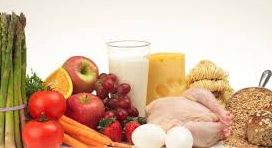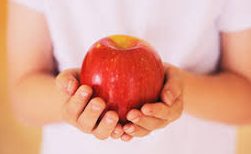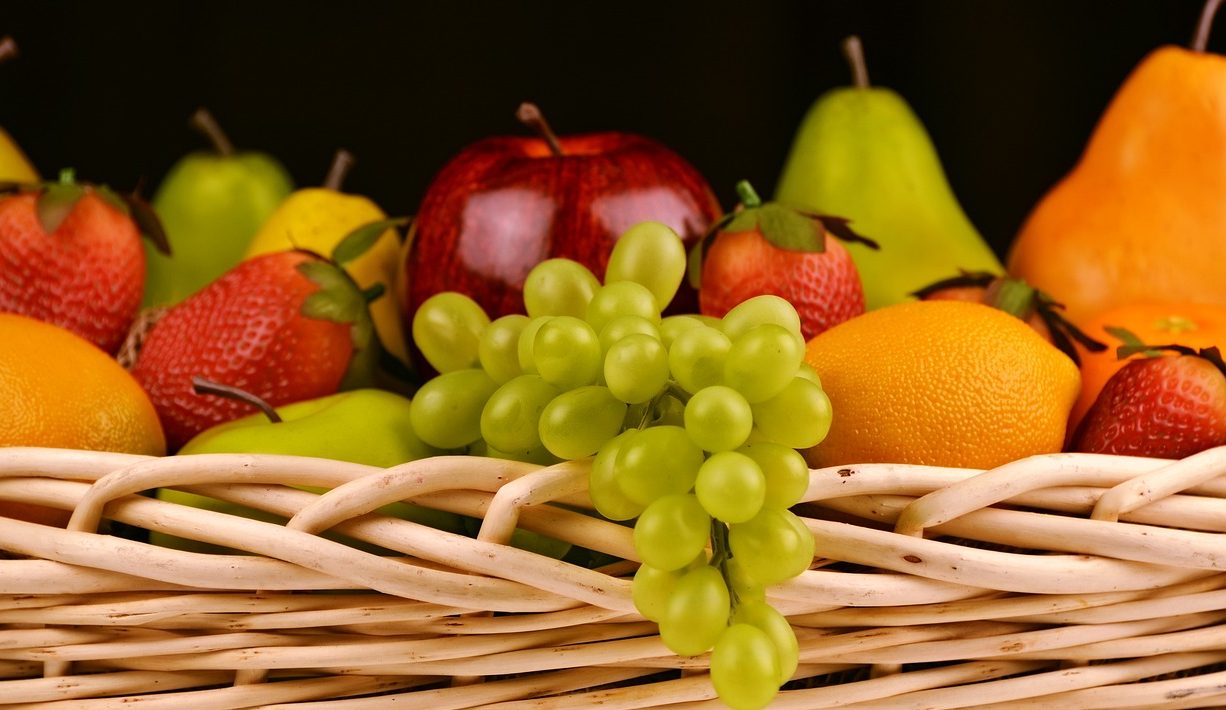Positive Introduction to Health & Nutrition H+3 are interrelated concepts that focus on maintaining optimal well-being through proper diet, exercise, and lifestyle choices

03_Positive Introduction to Health & Nutrition H+3 In this Article We will tell you about Introduction to Health & Nutrition Staying healthy and getting good food are connected ideas. They’re about taking care of yourself by eating right, moving your body, and making good choices in how you live.
Being healthy means your body, mind, and feelings are all doing well. It’s about being fit, feeling good emotionally, stopping sickness, and being able to handle everyday challenges. To be healthy, you should make good habits, deal with stress, sleep enough, and see a doctor when you need to care when needed.
03_Positive Introduction to Health & Nutrition H+3 Nutrition is about getting and eating food that gives your body the things it needs to work properly. This means understanding what different things in food, like carbs, proteins, fats, vitamins, minerals, and water, do to help your body grow and work right. Having good nutrition means eating a mix of healthy foods from different groups.
Eating healthy food gives your body what it needs to grow, fix itself, have energy, and stop sickness. This helps kids grow well, keeps a good weight, and lowers the chance of getting sick like from diabetes or heart problems.
03_Positive Introduction to Health & Nutrition H+3 Doing exercises regularly is also really important for being healthy. It makes your muscles and bones strong, helps your heart stay healthy, makes you feel good in your mind, and lowers the chance of getting sick for a long time making healthy choices.
Being healthy and getting good food aren’t just your own jobs, but they’re also about things in the community like having healthy food around, learning about good food, and getting medical help when you need it. The government, doctors, teachers, and groups of people all help make sure you know how to stay healthy and can do it.
03_Positive Introduction to Health & Nutrition H+3 By thinking about being healthy and eating good food, you can live a happier life, do more things, and have a smaller chance of getting sick.
For More information Click Here
Digestion in the Mouth:
The mouth is where the magic starts. It’s not just for talking and smiling, it’s a key player in digestion. Let’s explore how it works.
Teeth: The Chompers
Look in a mirror and you’ll see them – your teeth! They come in different shapes and sizes, and they have an important job.
They help us break down food into smaller pieces. When we take a bite of a sandwich, our teeth chew it into smaller, manageable bits.
Saliva: Nature’s Helper
03_Positive Introduction to Health & Nutrition H+3 Have you ever noticed your mouth watering when you smell something delicious?
That’s your body getting ready for digestion! Saliva, which is like a watery mix, contains special helpers called enzymes.
These enzymes start the process of breaking down the food.
Tongue: The Mover and Taster
The tongue is like a superhero of the mouth. It helps move the food around so our teeth can do their job.
It also has taste buds that let us enjoy different flavors. Ever wonder why chocolate tastes so good? Thank your taste buds!
Swallowing: Off to the Stomach
03_Positive Introduction to Health & Nutrition H+3 Once our teeth and saliva have done their part, it’s time to swallow.
The food now travels down a special tube called the esophagus and into our stomach. It’s like a slide for food!
Digestion in the mouth is like a team effort. Our teeth, saliva, and tongue all play crucial roles in making sure our bodies get the nutrients they need.
So, the next time you take a bite of your favorite snack, remember to thank your mouth for starting the amazing journey of digestion!
Digestion in the Stomach Positive Introduction to Health & Nutrition H+3

After our mouth does its job, the food travels down to the stomach. This is where the real party of digestion begins!
Let’s take a closer look at how our stomach works its magic.
The Mighty Stomach
03_Positive Introduction to Health & Nutrition H+3 The stomach is like a powerful mixing bowl inside our bodies. It’s a stretchy bag made of strong muscles, and it’s built to handle whatever we throw at it.
Acid Attack!
The stomach has a special juice called gastric juice. It’s like a super liquid that helps break down our food. One of the main ingredients in this juice is stomach acid, which sounds a bit scary, but it’s actually really helpful! The acid’s job is to make the food mushy and easier to digest.
The Churning Dance
Once the food is in the stomach, the muscles start doing a special dance called peristalsis. They squeeze and mix everything up. Imagine your stomach doing a gentle tummy tango! This churning motion helps the stomach acid mix with the food.
Enzymes Join the Party
Remember those helpful enzymes from our mouth? They’re still here, lending a hand in the stomach too. They keep breaking down the food into smaller pieces. Teamwork makes the dream work!
A Little Rest and Digest
After all the mixing and churning, the food hangs out in the stomach for a while. This is where some of the nutrients get absorbed into our bloodstream. It’s like a little rest stop on the digestion journey.
Saying Goodbye to the Stomach
03_Positive Introduction to Health & Nutrition H+3 Once the food is all mushed up and ready, it’s time to move on. The stomach sends it down to the next part of our digestive system, the small intestine. It’s like passing the baton in a relay race!
Conclusion: The Stomach’s Starring Role
The stomach plays a crucial role in digestion. It takes the food we eat and turns it into a mushy, nutrient-packed mixture that our bodies can use. So, the next time you enjoy a meal, give a little thanks to your amazing stomach for its hard work!
When it comes to digestion, the small intestine is the star of the show. This long, tube-like organ plays a crucial role in breaking down the food we eat and absorbing the nutrients our bodies need to thrive.
The Journey of Digestion:
Before food reaches the small intestine, it undergoes a process in the stomach where it’s mixed with powerful digestive juices. Once it’s properly liquefied, it’s time for the small intestine to take over.
Enzymatic Wonderland:
The small intestine is like a bustling factory, complete with workers called enzymes. These enzymes are specialized molecules that help break down different types of food into smaller, more manageable pieces.
Carbohydrate Digestion: When starchy foods like bread or pasta reach the small intestine, enzymes get to work, breaking them down into sugars like glucose.
Protein Breakdown: Proteins from meat, eggs, and other sources are transformed into amino acids. These are the building blocks our bodies use to repair and grow tissues.
Fat Transformation:
Fats, including those from oils, butter, and nuts, are broken down into fatty acids and other components that can be absorbed.
Nutrient Absorption:
03_Positive Introduction to Health & Nutrition H+3 Now that the food is in its simplified form, it’s ready to be absorbed into the bloodstream. This is where the small intestine truly shines. The walls of the small intestine are lined with millions of tiny, finger-like projections called villi. These villi are like super-absorbent sponges, soaking up the nutrients and sending them into the bloodstream to be distributed throughout the body.
The Role of the Villi:
Absorbing Nutrients: Each villus is packed with blood vessels and lacteals (specialized vessels for fat absorption). They work together to transport nutrients to where they’re needed.
Efficient Surface Area: The small intestine is not called “small” because of its length; it’s because of its diameter. The folded inner surface, covered in villi, provides an extensive area for absorption.
Selective Absorption:
03_Positive Introduction to Health & Nutrition H+3 The villi have a kind of gatekeeper role. They can select which nutrients to absorb, ensuring that only the necessary ones make their way into the bloodstream.
The Final Stretch:
As nutrients are absorbed, what’s left is a mixture of water, fiber, and waste products. This mixture, known as chyme, continues its journey through the small intestine. By the time it reaches the end, most of the nutrients have been absorbed, leaving behind material that the body can’t use.
The Handoff to the Large Intestine:
03_Positive Introduction to Health & Nutrition H+3 Whatever the body can’t absorb moves on to the large intestine, also known as the colon. Here, water is absorbed from the remaining material, turning it into feces, which is eventually eliminated from the body.
Keeping the Small Intestine Happy:
Taking care of the small intestine is essential for overall health. Here are some simple tips:
Balanced Diet: Eating a variety of foods ensures that the small intestine gets a range of nutrients to work with.
Hydration: Proper hydration keeps things moving smoothly through the digestive system.
Fiber Intake: Fiber adds bulk to stool, aiding in regular bowel movements.
Limit Processed Foods: These can be harder for the small intestine to process effectively.
Listen to Your Body:
Pay attention to how different foods make you feel. This helps in understanding what your small intestine likes and dislikes.
Conclusion: Small Intestine, Big Role
The small intestine might be a quiet hero, but its role in digestion is nothing short of remarkable. From breaking down food to absorbing essential nutrients, it’s a crucial player in keeping our bodies nourished and healthy. So, the next time you sit down for a meal, take a moment to appreciate the incredible work happening in your small intestine.
It’s where the magic of digestion truly happens!
Absorptive and Transport Mechanisms:

03_Positive Introduction to Health & Nutrition H+3 When we eat, our bodies go to work in a fascinating process of absorbing and transporting nutrients.
This is a vital part of how we get the energy and building blocks we need to thrive.
Let’s dive into the world of absorptive and transport mechanisms in a way that’s easy to understand.
The Absorption Adventure:
After the food we eat is broken down in the stomach and small intestine, the nutrients are ready to be absorbed.
This happens in the walls of the small intestine, which are like a bustling marketplace where nutrients are traded and transported.
The Role of Villi and Microvilli:
03_Positive Introduction to Health & Nutrition H+3 Imagine the walls of the small intestine as a busy market square.
Covering these walls are tiny, finger-like projections called villi, and even smaller ones called microvilli.
These structures greatly increase the surface area of the intestine, providing more space for absorption.
Carbohydrates, Proteins, and Fats:
Carbohydrates: Once broken down into sugars, like glucose, they’re absorbed into the bloodstream through the villi.
Proteins: They’re broken down into amino acids, which are also absorbed into the bloodstream.
Fats: They’re transformed into fatty acids and other components. While some are absorbed into the bloodstream, others enter special vessels called lacteals, which eventually join the bloodstream.
Water and Electrolytes:
03_Positive Introduction to Health & Nutrition H+3 Alongside nutrients, water and electrolytes (like sodium, potassium, and calcium) are absorbed.
They’re crucial for maintaining the balance of fluids and electrolytes in our bodies.
Specialized Transporters:
03_Positive Introduction to Health & Nutrition H+3 Within the walls of the small intestine, there are specific proteins known as transporters.
They act like gatekeepers, allowing certain nutrients to pass through while blocking others.
For instance, glucose has its own special transporter that helps it enter the cells lining the intestine.
The Bloodstream Highway:
03_Positive Introduction to Health & Nutrition H+3 Once inside the cells of the intestine, nutrients travel through the bloodstream. This is like a highway system that carries them to different parts of the body where they’re needed.
The Liver’s Role:
Before nutrients reach the rest of the body, they make a pitstop at the liver. This amazing organ acts as a processing plant, ensuring that nutrients are distributed in a balanced and controlled way.
The Lymphatic System:
Fats, after being absorbed through the lacteals, travel through a different route. They enter the lymphatic system, which eventually connects back into the bloodstream.
Vitamins and Minerals:

These essential nutrients are also absorbed in the small intestine. They play crucial roles in various bodily functions, from bone health to immune system support.
Water-Soluble vs. Fat-Soluble:
Water-Soluble Vitamins (like Vitamin C and certain B vitamins) are absorbed directly into the bloodstream. Any excess is excreted in urine.
Fat-Soluble Vitamins (like Vitamins A, D, E, and K) require dietary fat for absorption. They’re absorbed along with dietary fats and transported in the lymphatic system.
The Colon’s Part:
03_Positive Introduction to Health & Nutrition H+3 While the small intestine is the star of absorption, the colon (large intestine) has its own important role.
It absorbs water and electrolytes from the remaining material, turning it into feces, which eventually leaves the body.
Conclusion: The Marvels of Nutrient Absorption
Absorptive and transport mechanisms are like the unsung heroes of digestion.
They ensure that the nutrients we get from food are delivered to the right places in our bodies. This intricate process keeps us energized, supports growth and repair, and helps us stay healthy and strong.
So, the next time you enjoy a nutritious meal, remember the amazing journey those nutrients take to nourish your body!


1 thought on “Introduction to Health & Nutrition”